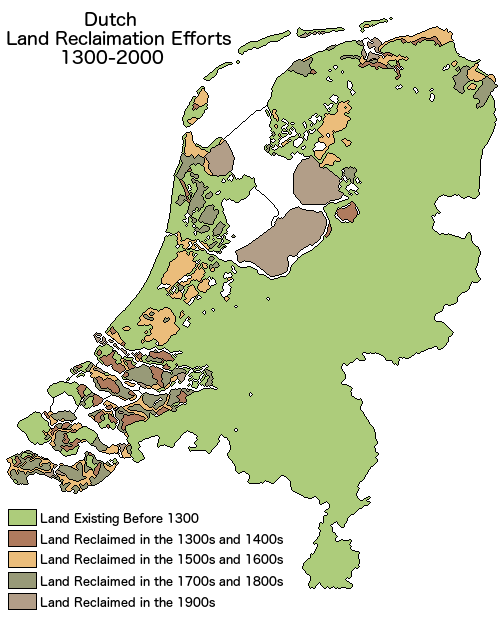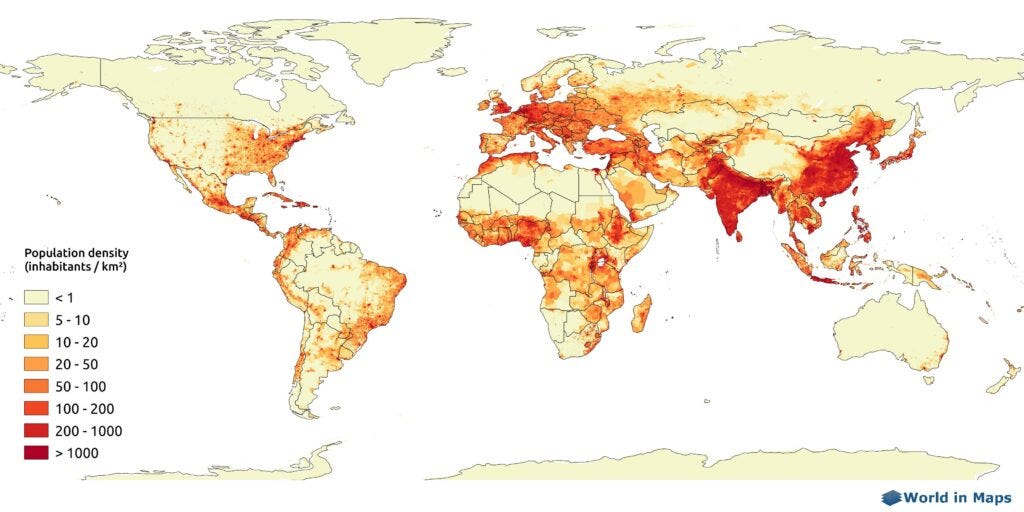It’s September or 2021 and 7,7 billion people lives on the Earth. This number is not exact and it would be impossible to know the precise amount, but it’s very accurate. There are a lot of countries and communities that aren’t part of the “system”, (and they don’t pretend to be).
According to estimates of Our World in Data, the Earth population will grow to 9,7 billion by 2050 and 10,9 billion by 2100. It seems that during this century the growth of the world population will slow down considerably, although this is only an estimate and it is very difficult to make predictions within the chaos of such a complex system.

However, it does not seem that we will experience major space problems, mainly in Southeast Asia, where a big percentage of the population has been located for the last few decades.

Although we haven’t yet suffered crucial problems due to overpopulation, since a few centuries ago countries such as the Netherlands have needed to reclaim land to the sea through the construction of artificial islands or levees.
Tomas Pueyo explains in his newsletter (Uncharted Territories) that geography is a problem that can negatively influence the development of their citizens in many countries. China is a clear example of this, hosting a high percentage of its population in the eastern part of the country, known as the North China Plain. I recommend reading his post to keep learning about this topic.
China isn’t the only one. Geographical reasons are responsible for the low population densities in most uninhabited areas. The cold regions of northern Russia or Canada are practically desolated. The same goes for dry areas such as the Sahara desert or mountainous areas such as the Himalayas. In short, these areas are abandoned because of the severe living conditions to live there.

In summary, the population will grow in the next years, but nobody wants to live in the middle of the Amazon jungle. Consequently, it seems that Europe, the south of Africa and the southeast of Asia will be the hub of population growth. How can we deal with this wave of births in areas with high population densities?
Space science
The idea of starting new societies on other planets of the universe is nothing new. Science fiction has been fantasizing about it for decades, with great writers such as Frank Herbert or Isaac Asimov (it's a genre that I have yet to explore more).
But this has not only remained in fiction novels. The Cold War, one of my favourites history periods, was like a dispute between two children to see who could collect more stickers. The Space Race was a conflict between the USA and the extinct USSR to achieve goals in space, such as placing the first satellite into orbit or launching the first human into space. Although the Soviets started with an advantage, the Americans finally levelled the balance with the landing on the Moon. The next goal was clear: Mars.

After the Cold War, the governments of both nations stopped investing in space exploration. Now, thanks to the private initiative of corporations like Space X (Elon Musk) and Blue Origin (Jeff Bezos), it seems that the dream of reaching our neighbouring planet is coming back to our heads. But, is it necessary to colonize other planets to ensure the preservation of the species?
Where if there was no need to expand across the universe?
If we have to divide the same surface area by more citizens, the result is theoretically simple: we have fewer m2 per capita than before. Tall buildings are a good choice, but these cannot grow in an unlimited way. Additionally, other factors such as traffic would be highly affected.
If we colonized other planets, we will have more surface area, and therefore, the m2 per capita would increase. However, this process of expansion through space is still a long way from becoming a fact.
So, if we cannot populate geographically complicated areas such as the Himalayas, nor can we colonize other planets, what’s left? Well, we can replace unnecessary buildings with new dwellings. Can the Internet, the cloud technologies and the metaverse deal with it? Let’s take a few examples:
- If public administrations were only allowed to carry out their procedures through virtual portals, we could dispense with a multitude of administrative buildings such as town halls or tax offices.
- If doctors could perform their diagnoses via VR with the patient at home, there would be no need for so many hospitals and primary care centres.
- If young people could study from home using Zoom and AR tools, schools, colleges and universities could be replaced.
- If all purchases were made through digital channels, there would be no need for stores or shopping malls.
- If remote work were fully implemented in society, office buildings could be replaced and transformed into huge residential houses.
And etcetera in which we could include NFTs, the metaverse or smart contracts.
However, let us not forget that the Internet is not ethereal, but is stored in large data centres, which consumes physical space and large amounts of energy. Although with each passing year, we can store more information using smaller storage units, as Intenet that relaces a large part of everyday activities will require a large number of resources that will have to be covered.
Is this the world we want to live in?
The data are clear: the world’s population will not stop growing during this century. In addition, the least populated areas of the planet are very unattractive, making it difficult to distribute population density. The idea of transferring many of our daily activities to the Internet may be a good idea to maximize housing construction and allow population sustainability.
We are used to hearing the famous phrase “any time in the past was better”, although we cannot doubt that technology has improved our lives with greater or lesser impact. All aspects of our lives will eventually become digitalized, i.e., they will stop being part of our reality and move into cyberspace.
However, what problems could all this cause? I can think of problems resulting from a sedentary lifestyle: why go out to play with friends in the street if they already exchange NFTs virtually? Why spend 30 minutes going to the doctor’s office if they can attend telematically? Yes, technology has made us more passive, we need to move less and less to achieve what we set out to do, and sport is no longer a necessity but a hobby.
